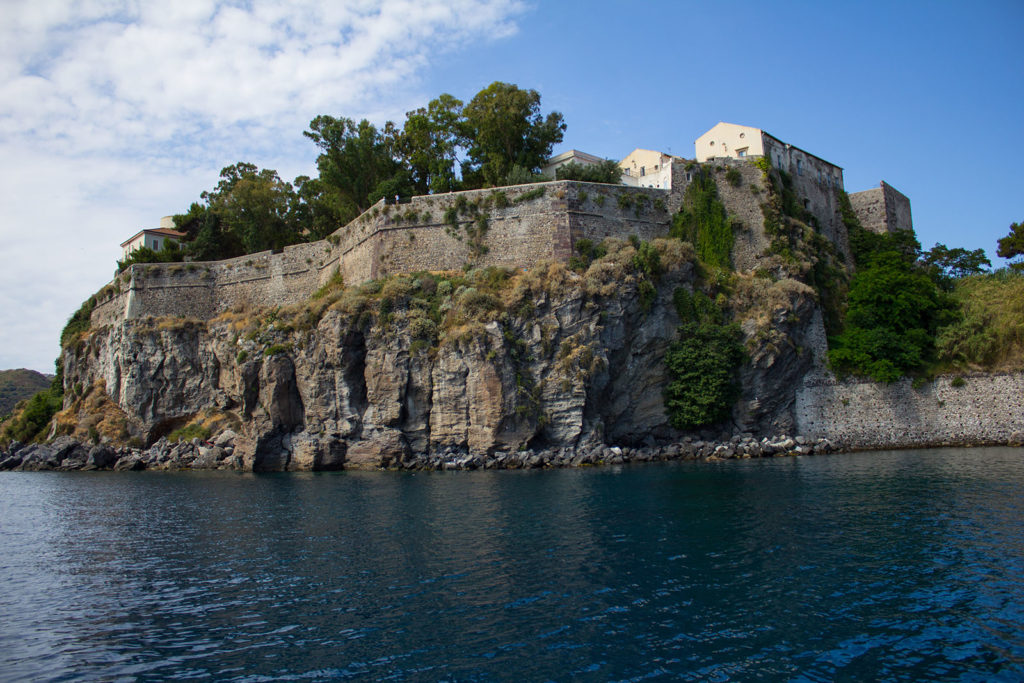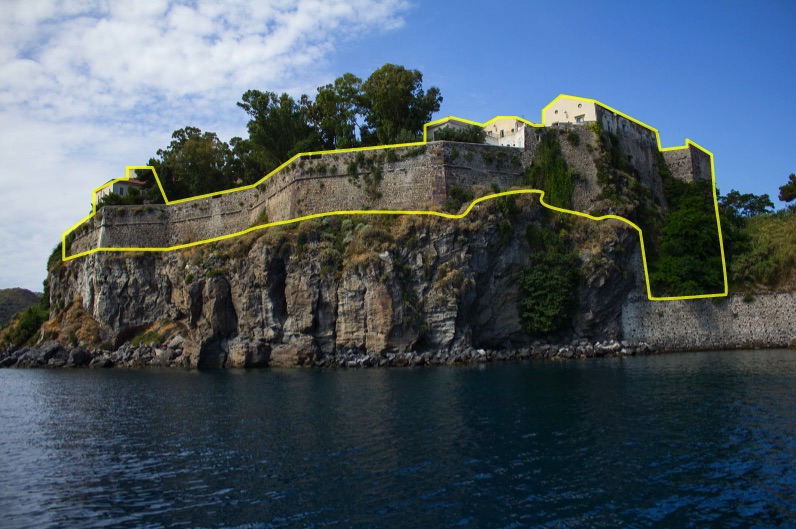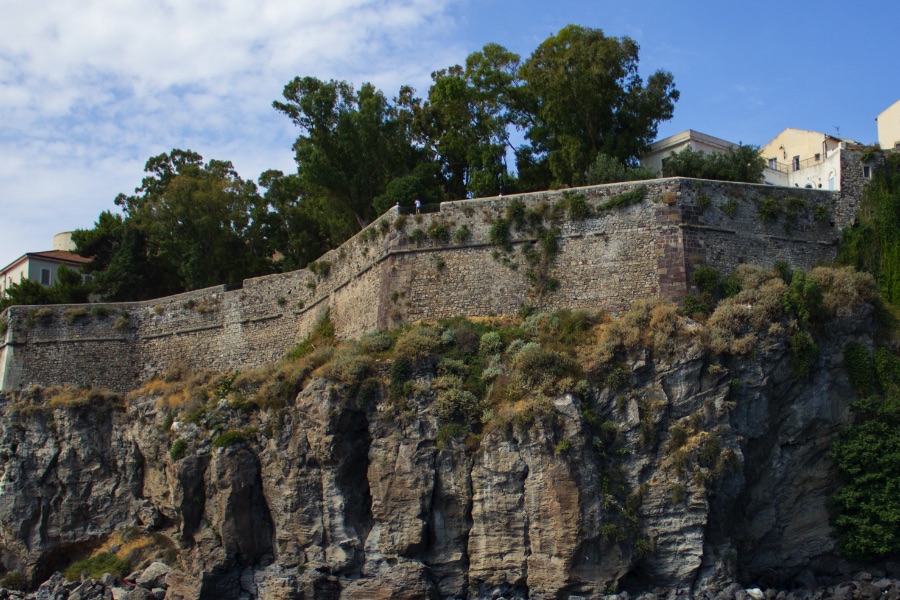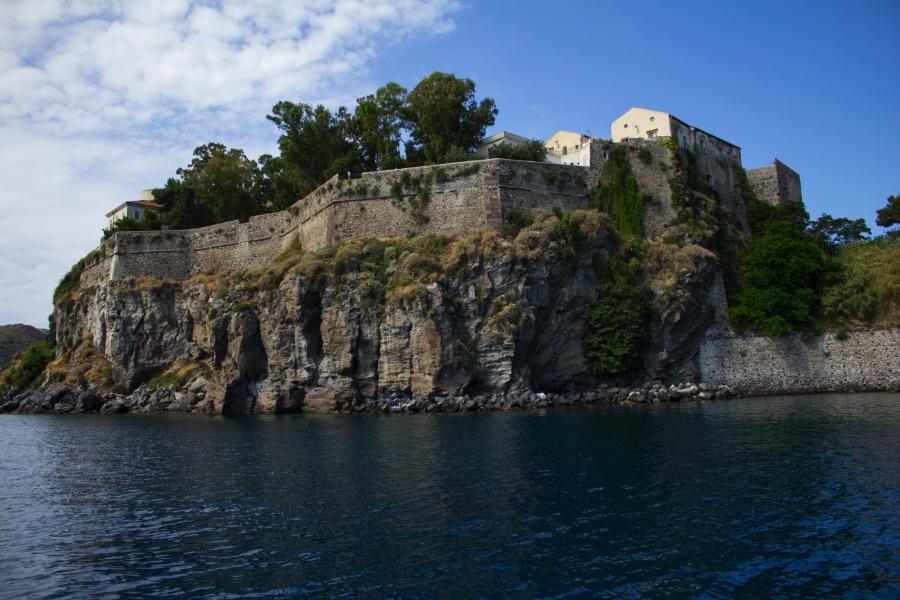Lipari Castle is almost “fused” with the majestic lava dome on top of which it is built and through which it juts out into the sea, rising to a height of around fifty metres.

This
volcanic dome
was formed less than 20,000 years ago, in the middle of a large bay on the east coast of Lipari, between the two current inlets of Marina Lunga to the north and Marina Corta to the south. The fortress is surrounded by high inaccessible vertical crags that are flat on top. Thanks to its structure, it has always been a natural fortress, offering a safe place from enemy raids since ancient times.
The archaeological excavations conducted by Luigi Bernabò Brea and Madeleine Cavalier after 1950 brought to light a continuous sequence of levels that in the southern part reaches a thickness of 9 metres. This sequence is one of the most complete in the Mediterranean and covers a period ranging from prehistoric to late Roman times.
The Castle’s current appearance derives from the mighty Spanish fortifications built by Charles V in 1560. The walls, which covered the rock up to the base, were equipped at various points with artillery stations and embrasures, now closed off by walls. On the north side the Spanish walls have incorporated the Norman towers dating back to the 12th century, including a tower-door that was the ancient entrance from the hill of the Civita (now Piazza Mazzini) to the Castle. Even today, this is still the main entrance to the fortress. At this point, in addition to the Spanish and Norman fortifications, it is possible to see a Greek-age tower from the 4th century BC, built with square blocks of reddish Monte Rosa stone (an ancient eruptive centre located just north of the town of Lipari), arranged in 23 rows high.


